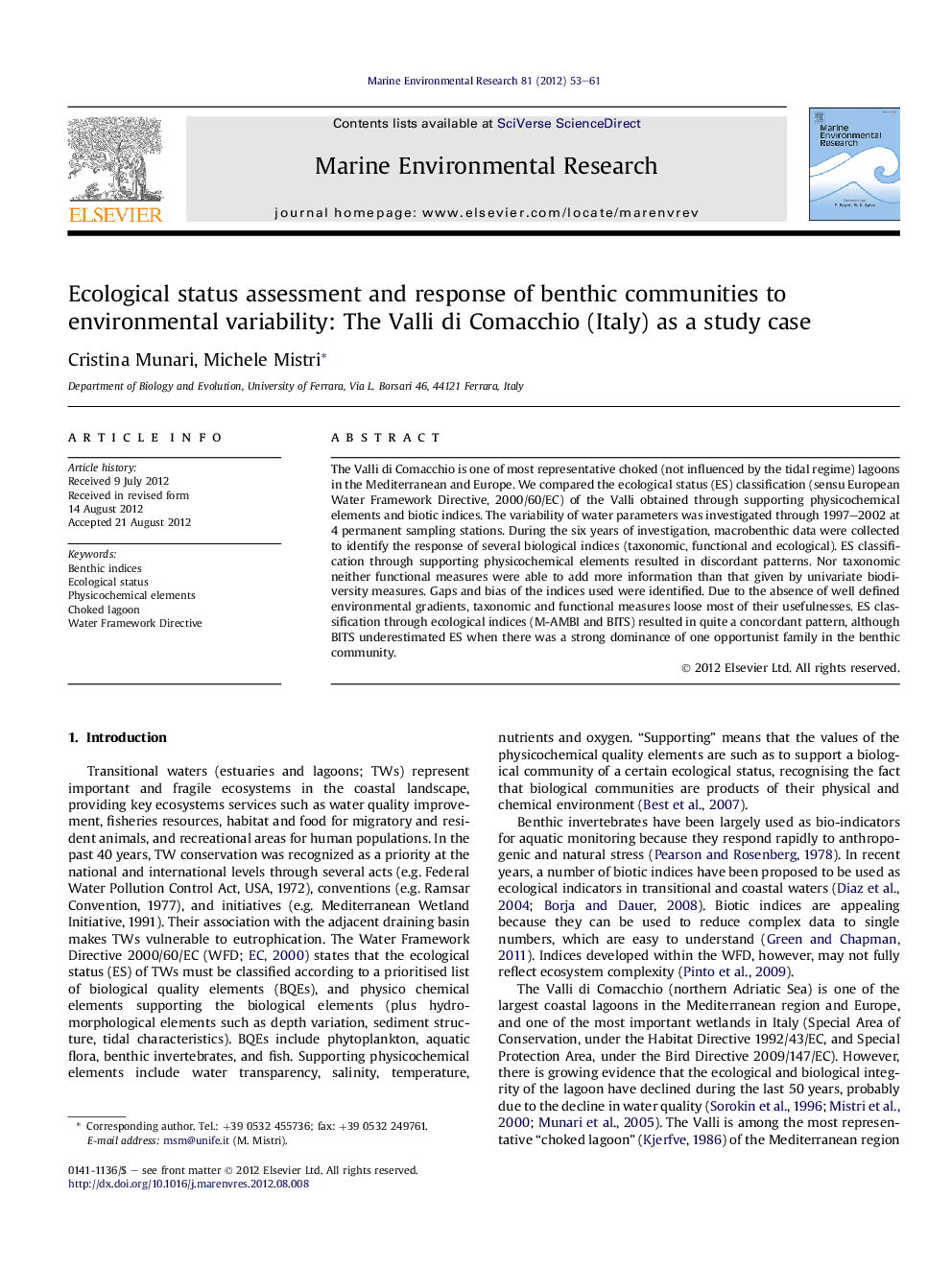| Article ID | Journal | Published Year | Pages | File Type |
|---|---|---|---|---|
| 4550969 | Marine Environmental Research | 2012 | 9 Pages |
The Valli di Comacchio is one of most representative choked (not influenced by the tidal regime) lagoons in the Mediterranean and Europe. We compared the ecological status (ES) classification (sensu European Water Framework Directive, 2000/60/EC) of the Valli obtained through supporting physicochemical elements and biotic indices. The variability of water parameters was investigated through 1997–2002 at 4 permanent sampling stations. During the six years of investigation, macrobenthic data were collected to identify the response of several biological indices (taxonomic, functional and ecological). ES classification through supporting physicochemical elements resulted in discordant patterns. Nor taxonomic neither functional measures were able to add more information than that given by univariate biodiversity measures. Gaps and bias of the indices used were identified. Due to the absence of well defined environmental gradients, taxonomic and functional measures loose most of their usefulnesses. ES classification through ecological indices (M-AMBI and BITS) resulted in quite a concordant pattern, although BITS underestimated ES when there was a strong dominance of one opportunist family in the benthic community.
► The Valli di Comacchio are representative of Mediterranean choked lagoons. ► The benthic fauna was dominated by opportunist detritivores, filter-feeders were almost absent. ► Physicochemical elements did not correlate with biodiversity, ecological or functional indices. ► Variations in functional indices were not due to increases in ecosystem complexity. ► Where environmental gradients are scarce, many benthic indices loose their usefulness.
